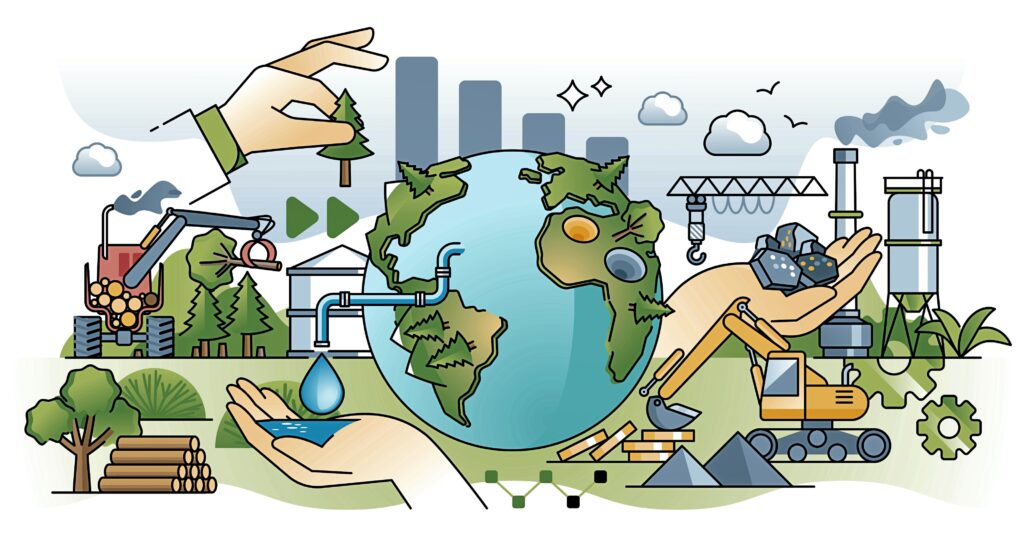In a world increasingly defined by the impacts of climate change, forests’ role in maintaining ecological balance and providing renewable resources is more critical than ever.
As we navigate the complexities of environmental conservation, societal expectations and support for forestry-dependent communities, we must look beyond sensational headlines and focus on the long-term benefits of well-managed forests.
Benefits that are shared by all and the universally agreed upon principles of sustainable forest management. It’s essential to consider the long-term benefits of well-managed forests and how they contribute to a more sustainable future for all members of society.
Forests and Climate Change
Forests are crucial in capturing and storing carbon dioxide, making them a natural solution for climate change mitigation. By managing forests responsibly, we can ensure they continue to absorb carbon, support biodiversity, and provide a renewable source of timber and other forest products.

The global demand for timber is growing as industries and consumers seek more sustainable materials. Timber from well-managed forests is a low-carbon alternative to more energy-intensive construction materials, helping to reduce the carbon footprint of construction and other sectors. In the past, Wood Central has reported on this increasing demand and timber’s critical role in sustainable development.
Science and Research in Forest Management
Science and research are vital to improving forest management practices. Advances in our understanding of ecosystems, species behaviour, and the impacts of climate change have led to better techniques for managing forests sustainably. For example, research on koala populations has informed practices that protect their habitats while allowing for responsible timber production. This balance is crucial for ensuring our forests remain healthy and resilient.

Research also plays a role in fire management, soil and water conservation, and maintaining overall forest health. By applying scientific knowledge, we can develop strategies that protect our forests from threats like invasive species and bushfires, ensuring they continue to thrive for generations to come.
The Role of Government, Environmental Regulators and Certification Schemes
Governments, through their environmental regulators, are responsible for setting guidelines and enforcing rules that ensure forests are managed sustainably. Their oversight helps balance economic development with protecting our natural environment. Voluntary certification schemes, like the Programme for the Endorsement of Forest Certification (PEFC) and the Forest Stewardship Council (FSC), also contribute to better forest outcomes.
These schemes set standards for sustainable forestry practices, from stakeholder engagement to protecting biodiversity and managing soil and water resources. This trend is further accelerated with the rollout of the EUDR and the drive to end forest degradation. Certification helps provide a quasi-green lane as organisations navigate the complexities of EUDR requirements.
Looking Ahead
Regardless of the headlines, managing our forests means balancing conservation, maintaining forest health and fire resilience and the need for low-carbon resources. By practising continually improving, science-informed, third-party audited harvesting of forest resources that maintains biodiversity and protects forest values, we can meet today’s needs without compromising the health of our forests for the future. Not just in Australia but worldwide for future generations.

It’s important to recognise the difference between historical land clearing and forestry practices of the past and the responsible strategies being implemented today. By supporting initiatives informed by science, guided by strong regulations, and endorsed by recognised certification schemes, we can ensure our forests remain healthy and productive.
As we look forward, the success of the forestry sector will be seen in our forests’ resilience and continued ability to support the environment and the communities that rely on them. A less sensationalised and more balanced approach will help us move towards a more sustainable and lower-carbon future.
- Please Note: Wood Central is a neutral platform and will not take an editorial stance on the Australian native forestry debate. However, it invites subject matter experts to provide contributors, who will be fact-checked before publication.






